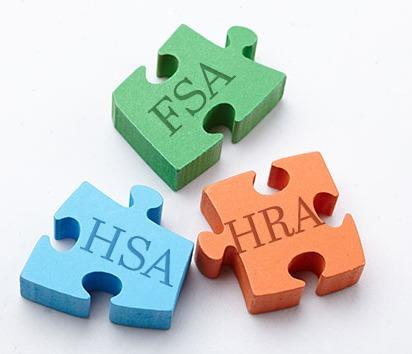Decoding FSAs, HSAs, and HRAs
By Kathryn O'Connor, PHR, SHRM-CP, CCP, GRP, Director, Compensation Services
Published July 29, 2025
 As benefits season approaches, employers are again challenged with helping employees make informed healthcare decisions. Understanding the key differences between tax-advantaged accounts is critical not only for accurate plan communication, but also for strategic benefits planning. While Flexible Spending Accounts (FSAs), Health Savings Accounts (HSAs), and Health Reimbursement Accounts (HRAs) all help employees manage out-of-pocket health care costs, their structures and plan participation rules vary considerably.
As benefits season approaches, employers are again challenged with helping employees make informed healthcare decisions. Understanding the key differences between tax-advantaged accounts is critical not only for accurate plan communication, but also for strategic benefits planning. While Flexible Spending Accounts (FSAs), Health Savings Accounts (HSAs), and Health Reimbursement Accounts (HRAs) all help employees manage out-of-pocket health care costs, their structures and plan participation rules vary considerably.
Health Care Flexible Spending Account (Health Care FSA)
A Health Care FSA allows employees to contribute pre-tax dollars to pay for eligible medical, dental, and vision expenses, including many over-the-counter items. Contributions are deducted from the employee’s paycheck pre-tax and are subject to an annual IRS limit ($3,300 in 2025, and likely to increase for 2026). Funds are available on the first day of the plan year.
Pros:
- Reduces taxable income for employees.
- Full election amount is available at the start of the year.
- Ideal for predictable, short-term medical care needs.
Cons:
- Unused funds may be forfeited via use-it-or-lose-it rules (though plans may offer a small carryover or grace period).
- Employees lose the account if they separate from the organization. In some instances, the plan can be continued through COBRA.
- If an employee separates mid-year and has overdrawn their Health Care FSA, the organization cannot require them to reimburse the overdrawn amount.
Dependent Care Flexible Spending Account (Dependent Care FSA)
This account allows employees to use pre-tax dollars to pay for dependent care expenses, such as daycare, preschool, or eldercare for qualifying dependents. The annual IRS contribution limit is currently $5,000 per household.
Pros:
- Helps working parents reduce the cost of child or elder care.
- Reduces taxable income.
Cons:
- Use-it-or-lose-it rules apply.
- Funds are only available as they are contributed (unlike the Health FSA).
- Requires strict IRS substantiation for reimbursements.
Health Savings Account (HSA)
An HSA is available only to employees enrolled in a high-deductible health plan (HDHP). Contributions can be made by employees and employers, subject to annual IRS contribution limits. Funds roll over year to year and can be used tax-free for qualified medical expenses. The account is owned by the employee and is portable.
Pros:
- Triple tax advantages: contributions, earnings, and withdrawals for qualified expenses are all tax-free.
- Funds roll over indefinitely – no use-it-or-lose-it rules.
- Money can be invested for long-term growth.
- Employees keep the HSA if they leave or retire.
- Considered a powerful, long-term savings tool.
Cons:
- Only available in conjunction with a HDHP, which may not be ideal for everyone.
Health Reimbursement Arrangement (HRA)
An HRA is an employer-funded plan that reimburses employees for qualified medical expenses. HRAs are not employee owned and cannot be funded by employees. Employers set reimbursement limits and eligible expenses.
Pros:
- Fully employer funded – no out-of-pocket cost to the employee.
- Can be paired with various health plans, not just HDHPs.
- No contribution limit imposed by IRS.
Cons:
- Employees lose access upon separation.
- No employee contributions allowed.
- No investment growth like an HSA.
FSAs, HSAs, and HRAs each offer unique advantages and can be valuable additions to your organization’s benefits offerings. As an organizational leader, it's important to partner with your benefits broker to evaluate your workforce needs and select the plan or plans that best fit your organization. HR Source members with questions are encouraged to contact the HR Hotline Online or live at 800-448-4584.